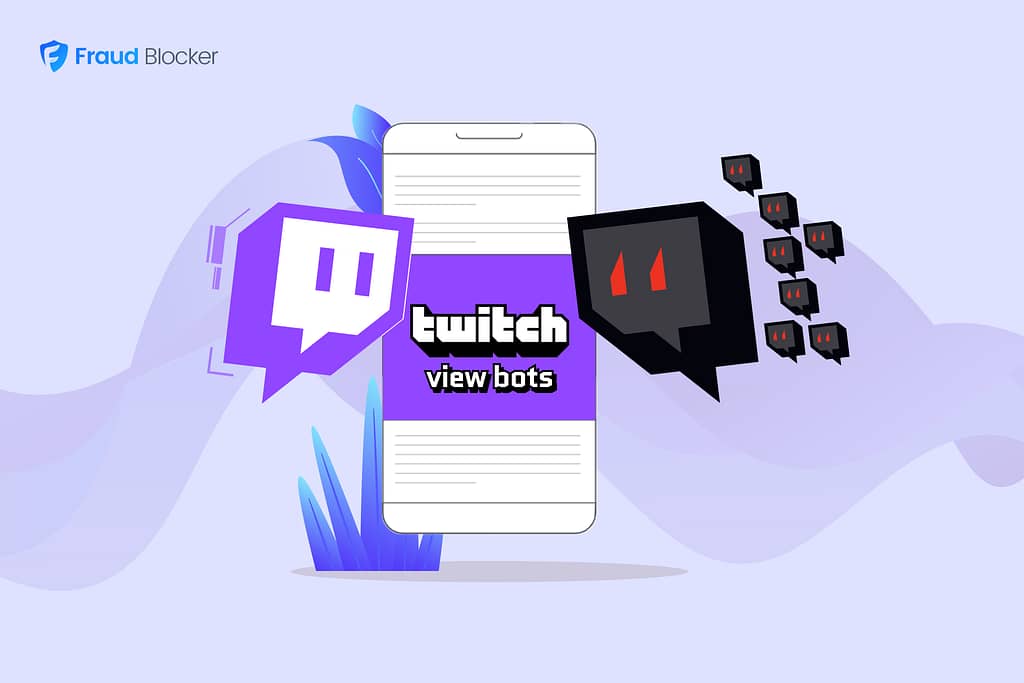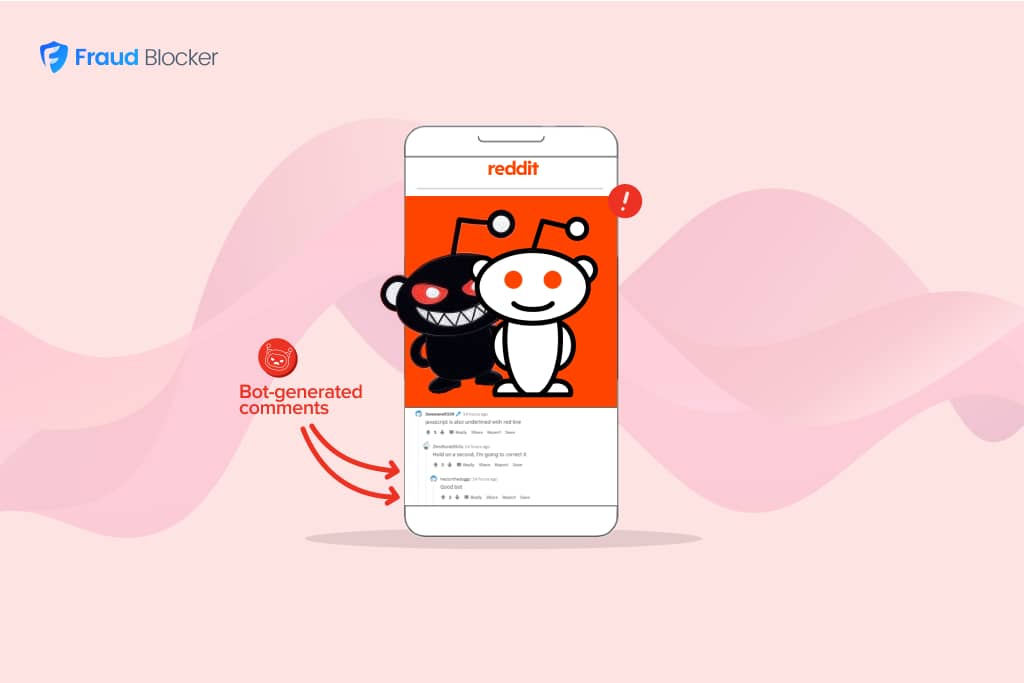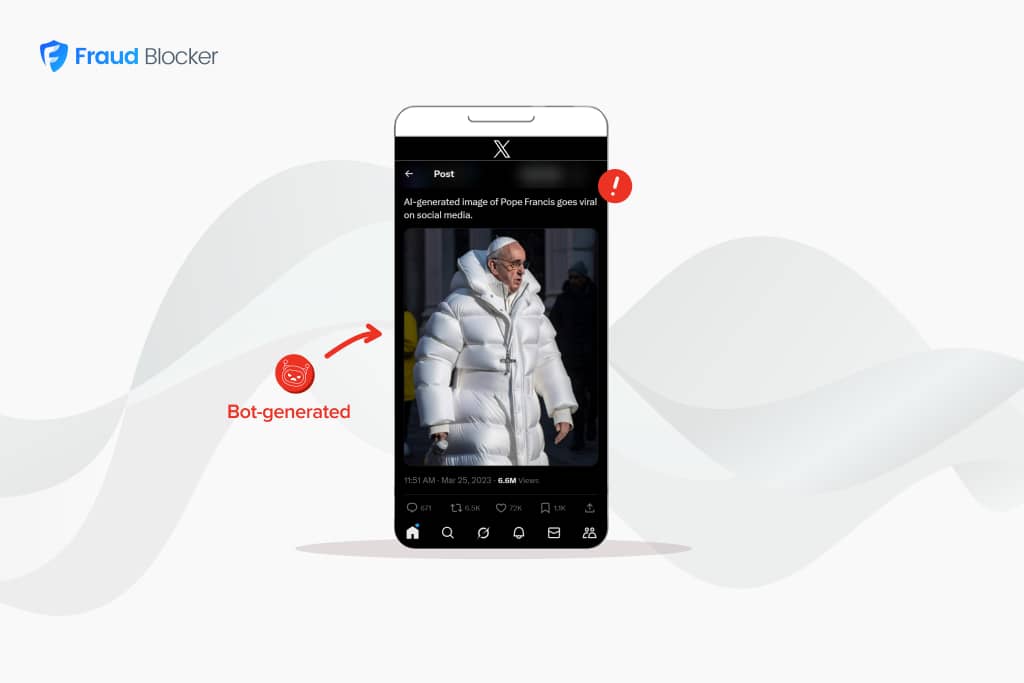
NEW New feature: Verify & block fake emails

We improve your ad performance by blocking click fraud and fake emails

Click fraud is costing advertisers billions in loses. Learn more here.

Click fraud is costing advertisers billions in loses. Learn more here.

Instagram, with its sprawling network of over a billion monthly users, stands as one of the predominant social media platforms. The platform’s extensive reach and influential power attract countless businesses, influencers, and casual users, eager to share moments and connect with audiences.
Yet, with this colossal popularity comes a shadowy underbelly: the rise of Instagram spam bots. These seemingly harmless virtual entities can impact genuine engagements, skew performance metrics, and tarnish the overall user experience. Dive deep with us as we dissect the world of Instagram spam bots, arming you with knowledge on their identification and eradication.
An Instagram spam bot is an automated account used to fake likes, follows, comments, posts and more. They are also called spam instagram accounts, and are often powered by scripts designed to carry out specific tasks without the need for human intervention
The objectives behind these bots can vary. Some aim to inflate engagement metrics artificially, while others seek to promote products, services, or links. Yet, regardless of their intention, their presence often results in negative experiences for genuine users.
Instagram’s parent company, Meta, discloses the quantity of fake accounts on its platform through its quarterly “Transparency Reports.” While they only show the amount of fake accounts on Facebook, not Instagram, it can still be a great reference point.
The latest report for the third quarter of 2023 revealed that 827 million accounts were deemed fake and eliminated. This figure accounts for approximately 4-5% of the total active user base, with AI likely increasing this in the future due to it’s difficulty in being detected and speed at creating human-like accounts.
Their ability to mimic genuine engagement can distort perceptions, mislead audiences, and dilute the authenticity that platforms like Instagram strive for. Users and brands must approach these capabilities with caution and prioritize genuine, human-centric engagement over artificial growth and interactions.
As the platform continues its battle against the intrusion of spam accounts, awareness remains the first line of defense for its vast user base..
With the rise of video generation AI models like Sora and Veo, it’s easier than ever to create AI-generated bot influencers.
This advancement plunges users into the depths of creepy-ness, where AI-generated influencers—predominantly resembling conventionally attractive women—captivate audiences with their digital allure on platforms like Twitter and Instagram. Notably, these AI creations boast characteristics like enhanced skin textures and repetitive backdrops, trademarks of AI image generators, yet the deception is often remarkably convincing.
Consider the profile of “Milla Sofia,” purportedly a “19-year-old robot living in Los Angeles.” She has nearly 3 million followers and she’s created over 1,200 posts with pictures of her in her daily life, traveling the world showing off her fashion style.
Here are examples of some popular bot-generated influencers:
Example of bot influencers on Instagram
There are even tools like makeUGC.ai that let you create AI influencers in a few seconds. This is the new way to make an instagram influencer—using a prompt in an AI tool, and getting an Instagram-ready creator in no time.
AI-generated influencers can be made instantly for Instagram
While bots are becoming increasingly sophisticated, there remain some tell-tale signs of their activity:
One of the most recognizable traits of a bot is the posting of vague or generic comments. Phrases like “Awesome pic 🔥🔥🔥” or “Love this ❤️” frequently dot posts, regardless of the content. Sometimes, these comments might be entirely unrelated, urging users to click on a suspicious link or visit a dubious profile.
A fake account is usually missing profile information such as a headshot or about info. They may also have zero posts or their handle is gibberish – such as @bucket_8930.
Genuine users have patterns to their interactions. An account that suddenly follows thousands within hours or likes hundreds of unrelated posts in rapid succession is a beacon of bot activity.
Accounts that follow a vast number of profiles but have a minimal follower count may be bots trying to increase their network rapidly.
If a profile feels impersonal or lacks original content, it’s a potential red flag. Bots often repost content or have feeds filled with promotional images and links.
If a profile lacks original content, it’s a potential red flag. Bots often repost content or have feeds filled with promotional images and links.
There are online tools that can help you identify if a profile has too any fake followers, such as Modash.io (no relation to Fraud Blocker). They combine many of the signals mentioned above to determine the ratio of fake to real followers..
Sample results from a tool that helps you identify fake follower counts of Instagram profiles.
While detecting bots is part of the battle, the real challenge lies in blocking them. Here are some steps you can take to avoid the spam:
Inside your privacy settings in Instagram, you can turn on additional settings to block spam based on keyword and/or offensive language. Note: Instagram does handle some basic filter, such as for phishing attacks or posts that break their Terms of Service.
To add this filter:
Navigate to Settings and privacy > Hidden Words. From there turn on “Advanced comment filtering” and then select “Manager customer words and phrases.” Add the words you’d like such as “hate” “onlyfans” etc.
Step-by-step instructions to filter Instagram spam based on keywords
This can lower your overall engagement but it can help with spam, especially if you’re receiving an unusually high amount. Go to Comments in the Settings and privacy (as noted above).
If you use popular hashtags in your posts, such as #love #fashion or #nature, then you make it easier for bots to find and spam you. Consider using more specific ones that reach a more targeted audience.
Heading to Vegas or Cancun? By tagging popular tourists destinations in your posts and stories, bots from promoters and the like can over-run your posts and DMs.
This can be a bit repetitive, but you can manually report bot spam to Instagram. Simply tap on the username of the suspected account, then tap the three dots and select “Report.”
There are a number of their-party platforms, such as StatusBrew or CommentGuard (no relation to Fraud Blocker), that offer more advanced spam blocking rules. These includes blocking users based on language, comments with attachments, type of conversation location (e.g. Instagram comment, Ad comment, Mention, etc) and more. Other tools can help block bots that may be clicking on your ads (Fraud Blocker will be offering protection against advertising bots on Instagram shortly).
If you run ads on Google, Facebook, or Instagram then Fraud Blocker can help improve your ad performance by blocking fraudulent clicks from bots, competitors and more.
According to a recent study from Juniper Research, 22% of ad spend is wasted due to fraud. Try our 7-day free trial today and see how much money we can save you.


